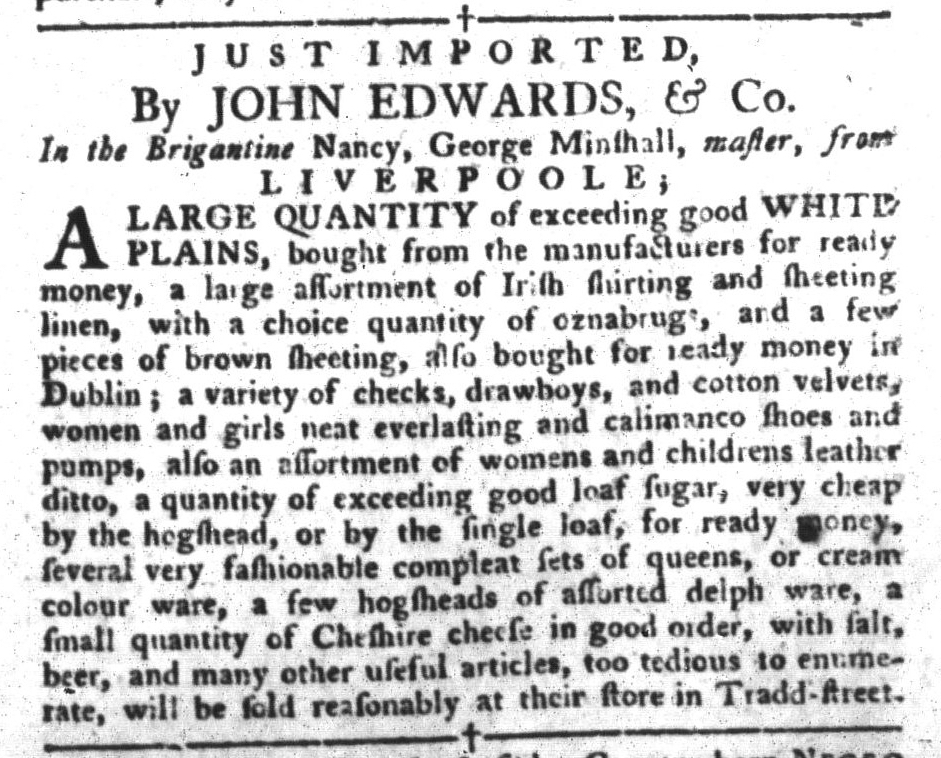What was advertised in a colonial American newspaper 250 years ago today?

“Many other useful articles, too tedious to mention.”
John Edwards and Company advertised an array of goods in the supplement that accompanied the October 11, 1768, edition of the South-Carolina Gazette and Country Journal. They emphasized abundance and consumer choice in the language deployed to describe the textiles available at their store on Tradd Street: “A LARGE QUANTITY of exceeding good WHITE PLAINS,” “a large assortment of Irish shirting and sheeting linen,” “a choice quantity of oznaburgs,” “a variety of checks, drawboys, and cotton velvets.” They applied the same appeals to other merchandise as well, including “an assortment of womens and childrens leather [shoes]” and “several very fashionable compleat sets of queens, or cream colour ware.” After listing dozens of items in their inventory, Edwards and Company concluded by underscoring the intertwined themes of abundance and choice, stressing that they carried “many other useful articles, too tedious to enumerate.” Rather than “tedious” perhaps the partners considered it too expensive to purchase additional space to list even more merchandise. They had made their pitch and their final appeal suggested prospective customers would discover an even more extensive selection when visiting their shop.
Other merchants and shopkeepers joined Edwards and Company in making general statements about the vast array of goods they sold. Godfrey and Gadsden, for instance, listed even more items than Edwards and Company yet also stated that carried “many other articles.” Mary King, a milliner, named about two dozen items associated with her trade but also promised “a variety of other articles.” Mansell, Corbett, and Roberts concluded their list-style advertisement with “&c. &c.” Dawson and Walter did the same. Not to be outdone, Alexander Gillon published a list twice as long and with an additional “&c.” at the end: “&c. &c. &c.” Through invoking the eighteenth-century abbreviation for et cetera, these entrepreneurs challenged readers to imagine what else they sold. Choosing not “to enumerate” all of their goods allowed advertisers to incite curiosity among prospective customers. They named enough to get readers thinking about the possibilities without eliminating any options outright. Advertisers offered consumers extensive choices, but when it came to tallying all of those choices in the public prints they often opted for a version of “less is more.” They accounted for just enough to stimulate interest and then promised even more, inviting prospective customers to see for themselves when visiting their shops.
